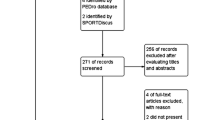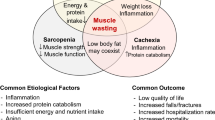Abstract
Background
Frailty is associated with several unfavorable outcomes after kidney transplantation (KTx). However, limited information is available regarding the transitions in frailty state and its components after KTx. This study aimed to evaluate the transitions in physical frailty phenotype and its components over a period of 12 months after KTx.
Methods
In this prospective single-center cohort study, we measured physical frailty phenotype (PFP) and its components at the time of admission for KTx and 12 months after KTx. The evaluation includes five components: weakness (grip strength analysed by sex and body mass index quartiles), physical activity (kcals/week based on the Minnesota Leisure Time Physical Activity questionnaire), exhaustion (self-report using the Center for Epidemiological Studies Depression Scale), gait speed (time taken to walk 15 feet based on sex and height-specific cutoff), and unintentional weight loss (self-report of unintentional weight loss > 10 lbs in the last year). The exhaustion and physical activity components are validated in the Brazilian population. Each component is scored as 0 or 1 according to its presence or absence, and a PFP score of 3–5 defines frailty, 2 is intermediate, and 0–1 is rated as non-frail. We used the McNemar and Wilcoxon test to compare physical frailty phenotype and its components between the two periods.
Results
Among 87 patients included in the study, 16.1% were classified as frail, 20.7% as intermediately frail, and 63.2% as non-frail. Sixty-four patients were included in the analysis to evaluate transitions in frailty. At the time of admission for KTx, 15.6% of patients were defined as frail compared to 4.7% of patients at 12 months after KTx (p = 0.023). Among the physical frailty phenotype components, the proportion of patients who scored in the weight loss category 12 months after KTx was significantly lower than that at the time of KTx (6.3% vs 34.4%, p < 0.001).
Conclusions
There was a 69.9% reduction in the prevalence of frail patients at the end of the 12-month follow-up after KTx. Among the components of frailty, weight loss showed a significant improvement.
Graphical abstract


Similar content being viewed by others
Data Availability
The datasets generated and/or analyzed during the current study are available from the corresponding author on reasonable request.
References
Crocker TF, Brown L, Clegg A et al (2019) Quality of life is substantially worse for community-dwelling older people living with frailty: systematic review and meta-analysis. Qual Life Res 28(8):2041–2056. https://doi.org/10.1007/s11136-019-02149-1
Hewitt J, Long S, Carter B, Bach S, McCarthy K, Clegg A (2018) The prevalence of frailty and its association with clinical outcomes in general surgery: a systematic review and meta-analysis. Age Ageing 47(6):793–800. https://doi.org/10.1093/ageing/afy110
Lan X, Li H, Wang Z, Chen Y (2020) Frailty as a predictor of future falls in hospitalized patients: a systematic review and meta-analysis. Geriatr Nurs 41(2):69–74. https://doi.org/10.1016/j.gerinurse.2019.01.004
Kojima G (2017) Frailty as a predictor of disabilities among community-dwelling older people: a systematic review and meta-analysis. Disabil Rehabil 39(19):1897–1908. https://doi.org/10.1080/09638288.2016.1212282
Chang SF, Lin PL (2015) Frail phenotype and mortality prediction: a systematic review and meta-analysis of prospective cohort studies. Int J Nurs Stud 52(8):1362–1374. https://doi.org/10.1016/j.ijnurstu.2015.04.005
Fried LP, Tangen CM, Walston J et al (2001) Frailty in older adults: evidence for a phenotype. J Gerontol A Biol Sci Med Sci 56(3):M146–M156. https://doi.org/10.1093/gerona/56.3.m146
Buigues C, Juarros-Folgado P, Fernández-Garrido J, Navarro-Martínez R, Cauli O (2015) Frailty syndrome and pre-operative risk evaluation: a systematic review. Arch Gerontol Geriatr 61(3):309–321. https://doi.org/10.1016/j.archger.2015.08.002
Exterkate L, Slegtenhorst BR, Kelm M et al (2016) Frailty and transplantation. Transplantation 100(4):727–733. https://doi.org/10.1097/TP.0000000000001003
Quint EE, Zogaj D, Banning LBD et al (2021) Frailty and kidney transplantation: a systematic review and meta-analysis. Transplant Direct 7(6):e701. https://doi.org/10.1097/TXD.0000000000001156
Garonzik-Wang JM, Govindan P, Grinnan JW et al (2012) Frailty and delayed graft function in kidney transplant recipients. Arch Surg 147(2):190–193. https://doi.org/10.1001/archsurg.2011.1229
Chu NM, Deng A, Ying H et al (2019) Dynamic frailty before kidney transplantation: time of measurement matters. Transplantation 103:1700–1704. https://doi.org/10.1097/TP.0000000000002563
McAdams-DeMarco MA, Law A, Salter ML et al (2013) Frailty and early hospital readmission after kidney transplantation. Am J Transplant 13(8):2091–2095. https://doi.org/10.1111/ajt.12300
Konel JM, Warsame F, Ying H et al (2018) Depressive symptoms, frailty, and adverse outcomes among kidney transplant recipients. Clin Transplant 32(10):e13391. https://doi.org/10.1111/ctr.13391
McAdams-DeMarco MA, Law A, King E et al (2015) Frailty and mortality in kidney transplant recipients. Am J Transplant 15(1):149–154. https://doi.org/10.1111/ajt.12992
McAdams-DeMarco MA, Law A, Tan J et al (2015) Frailty, mycophenolate reduction, and graft loss in kidney transplant recipients. Transplantation 99(4):805–810. https://doi.org/10.1097/TP.0000000000000444
McAdams-DeMarco MA, King EA, Luo X et al (2017) Frailty, length of stay, and mortality in kidney transplant recipients: a national registry and prospective cohort study. Ann Surg 266(6):1084–1090. https://doi.org/10.1097/SLA.0000000000002025
Dos Santos Mantovani M, Coelho de Carvalho N, Archangelo TE et al (2020) Frailty predicts surgical complications after kidney transplantation. A propensity score matched study. PLoS ONE 15(2):e0229531. https://doi.org/10.1371/journal.pone.0229531
McAdams-DeMarco MA, Olorundare IO, Ying H et al (2018) Frailty and postkidney transplant health-related quality of life. Transplantation 102(2):291–299. https://doi.org/10.1097/TP.0000000000001943
McAdams-DeMarco MA, Law A, Salter ML et al (2013) Frailty as a novel predictor of mortality and hospitalization in individuals of all ages undergoing hemodialysis. J Am Geriatr Soc 61(6):896–901. https://doi.org/10.1111/jgs.12266
Alsaad R, Chen X, McAdams-DeMarco M (2021) The clinical application of frailty in nephrology and transplantation. Curr Opin Nephrol Hypertens 30(6):593–599. https://doi.org/10.1097/MNH.0000000000000743
Haugen CE, Mountford A, Warsame F et al (2018) Incidence, risk factors, and sequelae of post-kidney transplant delirium. J Am Soc Nephrol 29(6):1752–1759. https://doi.org/10.1681/ASN.2018010064
Kobashigawa J, Dadhania D, Bhorade S et al (2019) Report from the American Society of Transplantation on frailty in solid organ transplantation. Am J Transplant 19(4):984–994. https://doi.org/10.1111/ajt.15198
McAdams-DeMarco MA, Isaacs K, Darko L et al (2015) Changes in frailty after kidney transplantation. J Am Geriatr Soc 63(10):2152–2157. https://doi.org/10.1111/jgs.13657
Quint EE, Schopmeyer L, Banning LBD et al (2020) Transitions in frailty state after kidney transplantation. Langenbecks Arch Surg 405(6):843–850. https://doi.org/10.1007/s00423-020-01936-6
Chu NM, Ruck J, Chen X et al (2022) Long-term trajectories of frailty and its components after kidney transplantation [published online ahead of print, 2022 Feb 20]. J Gerontol A Biol Sci Med Sci. https://doi.org/10.1093/gerona/glac051
Worthen G, Vinson A, Cardinal H et al (2021) Prevalence of frailty in patients referred to the kidney transplant waitlist. Kidney360 2(8):1287–1295. https://doi.org/10.34067/KID.0001892021
Batistoni SS, Neri AL, Cupertino AP (2007) Validade da escala de depressão do Center for Epidemiological Studies entre idosos brasileiros [Validity of the Center for Epidemiological Studies Depression Scale among Brazilian elderly]. Rev Saude Publica 41(4):598–605. https://doi.org/10.1590/s0034-89102007000400014
Lustosa LP, Pereira DS, Dias RC, Britto RR, Parentoni NA, Pereira LSM (2011) Translation and cultural adaptation of the Minnesota Leisure Time Activities Questionnaire in community-dwelling older people. Geriatr Gerontol Aging 5(2):57–65
Chang SH, McDonald SP (2008) Post-kidney transplant weight change as marker of poor survival outcomes. Transplantation 85(10):1443–1448. https://doi.org/10.1097/TP.0b013e31816f1cd3
Moreau K, Desseix A, Germain C et al (2021) Evolution of body composition following successful kidney transplantation is strongly influenced by physical activity: results of the CORPOS study. BMC Nephrol 22(1):31. https://doi.org/10.1186/s12882-020-02214-9
Chan W, Bosch JA, Jones D, McTernan PG, Phillips AC, Borrows R (2014) Obesity in kidney transplantation. J Ren Nutr 24(1):1–12. https://doi.org/10.1053/j.jrn.2013.09.002
Lafranca JA, IJermans JN, Betjes MG, Dor FJ (2015) Body mass index and outcome in renal transplant recipients: a systematic review and meta-analysis. BMC Med 13:111. https://doi.org/10.1186/s12916-015-0340-5
Chan W, Chin SH, Whittaker AC et al (2019) The associations of muscle strength, muscle mass, and adiposity with clinical outcomes and quality of life in prevalent kidney transplant recipients. J Ren Nutr 29(6):536–547. https://doi.org/10.1053/j.jrn.2019.06.009
Menna Barreto APM, Barreto Silva MI, Pontes KSDS et al (2019) Sarcopenia and its components in adult renal transplant recipients: prevalence and association with body adiposity. Br J Nutr 122(12):1386–1397. https://doi.org/10.1017/S0007114519002459
Yanishi M, Kinoshita H, Tsukaguchi H et al (2018) Dual energy X-ray absorptiometry and bioimpedance analysis are clinically useful for measuring muscle mass in kidney transplant recipients with sarcopenia. Transplant Proc 50(1):150–154. https://doi.org/10.1016/j.transproceed.2017.12.023
Kovesdy CP, Czira ME, Rudas A et al (2010) Body mass index, waist circumference and mortality in kidney transplant recipients. Am J Transplant 10(12):2644–2651. https://doi.org/10.1111/j.1600-6143.2010.03330.x
Costa NA, Minicucci MF, Pereira AG et al (2021) Current perspectives on defining and mitigating frailty in relation to critical illness. Clin Nutr 40(11):5430–5437. https://doi.org/10.1016/j.clnu.2021.09.017
Fogg C, Fraser SDS, Roderick P et al (2022) The dynamics of frailty development and progression in older adults in primary care in England (2006–2017): a retrospective cohort profile. BMC Geriatr 22(1):30. https://doi.org/10.1186/s12877-021-02684-y
Palmer K, Vetrano DL, Padua L et al (2019) Frailty syndromes in persons with cerebrovascular disease: a systematic review and meta-analysis. Front Neurol 10:1255. https://doi.org/10.3389/fneur.2019.01255
Vetrano DL, Palmer K, Marengoni A et al (2019) Frailty and multimorbidity: a systematic review and meta-analysis. J Gerontol A Biol Sci Med Sci 74(5):659–666. https://doi.org/10.1093/gerona/gly110
Lorenz EC, Kennedy CC, Rule AD, LeBrasseur NK, Kirkland JL, Hickson LJ (2021) Frailty in CKD and transplantation. Kidney Int Rep 6(9):2270–2280. https://doi.org/10.1016/j.ekir.2021.05.025
Kosoku A, Uchida J, Iwai T et al (2020) Frailty is associated with dialysis duration before transplantation in kidney transplant recipients: a Japanese single-center cross-sectional study. Int J Urol 27(5):408–414. https://doi.org/10.1111/iju.14208
Author information
Authors and Affiliations
Contributions
Conceptualization and methodology: MSM, MFM, LGMA, RSC, GBA, NAC, JFS, RAMBA; Data collection: MSM, NCC, RSC, GBA, RAMBA; Formal analysis: MFM, LGMA; Writing the initial draft: MSM, MFM, NAC, RAMBA; Supervision: RAMBA; Funding acquisition: RAMBA; All authors approved the final version of the manuscript.
Corresponding author
Ethics declarations
Conflict of interest
The authors of this study declare no conflict of interest.
Ethical approval
This study was performed in line with the principles of the Declaration of Helsinki. The Institutional Review Board of Botucatu Medical School approved this study (IRB approval number: CAAE 59232316.2.0000.5411). All participants provided written informed consent.
Funding
This work was supported by the São Paulo Research Foundation (FAPESP) (2016/24745-3) and Coordenação de Aperfeiçoamento de Pessoal de Nível Superior-Brasil (CAPES) (Finance Code 001).
Additional information
Publisher's Note
Springer Nature remains neutral with regard to jurisdictional claims in published maps and institutional affiliations.
Supplementary Information
Below is the link to the electronic supplementary material.
Rights and permissions
Springer Nature or its licensor holds exclusive rights to this article under a publishing agreement with the author(s) or other rightsholder(s); author self-archiving of the accepted manuscript version of this article is solely governed by the terms of such publishing agreement and applicable law.
About this article
Cite this article
dos Santos Mantovani, M., Coelho de Carvalho, N., Ferreira Minicucci, M. et al. Transitions in frailty state 12 months after kidney transplantation: a prospective cohort study. J Nephrol 35, 2341–2349 (2022). https://doi.org/10.1007/s40620-022-01436-4
Received:
Accepted:
Published:
Issue Date:
DOI: https://doi.org/10.1007/s40620-022-01436-4




